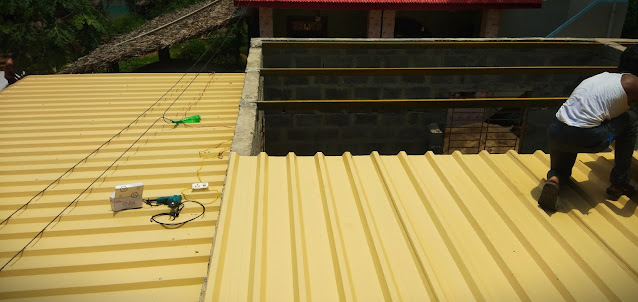WHERE STEEL FRAME
STRUCTURES ARE USED
Steel construction is
most often used in
·
High rise
buildings because of its strength, low weight, and speed of
construction
·
Industrial
buildings because of its ability to create large span spaces at
low cost
·
Warehouse
buildings for the same reason
·
Residential
buildings in a technique called light gauge steel construction
·
Temporary
Structures as these are quick to set up and remove
TYPES OF STEEL
BUILDING CONSTRUCTION
There are several
types of steel building construction. Steel construction is also called steel
fabrication.
Conventional Steel Fabrication is
when teams of steel fabricators cut members of steel to the correct lengths,
and then weld them together to make the final structure. This can be done
entirely at the construction site, which is labour-intensive, or partially in a
workshop, to provide better working conditions and reduce time.
Bolted Steel Construction occurs when steel fabricators
produce finished and painted steel components, which are then shipped to the
site and simply bolted in place. This is the preferred method of steel
construction, as the bulk of the fabrication can be done in workshops, with the
right machinery, lighting, and work conditions. The size of the components are
governed by the size of the truck or trailer they are shipped in, usually with
a max length of 6m (20ft) for normal trucks or 12m (40ft) for long trailers.
Since the only work to be done at site is lifting the steel members into place
(with cranes) and bolting, the work at site is tremendously fast. Pre-engineered
buildings are an example of bolted steel construction that is
designed, fabricated, shipped and erected by one company to the owner.
ADVANTAGES OF STEEL STRUCTURES
Steel structures have
the following advantages:
·
They are super-quick to build at site, as a lot of
work can be pre-fabbed at the factory.
·
They are flexible, which makes them very good at
resisting dynamic (changing) forces such as wind or earthquake forces.
·
A wide range of ready-made
structural sections are available, such as I, C, and angle sections
·
They can be made to
take any kind of shape, and clad with any type of material
·
A wide range of joining methods is available, such as bolting,
welding, and riveting
DISADVANTAGES OF STEEL STRUCTURES
Steel structures have
the following disadvantages:
·
They lose strength at
high temperatures, and are susceptible to fire.
·
They are prone
to corrosion in humid or marine environments






























